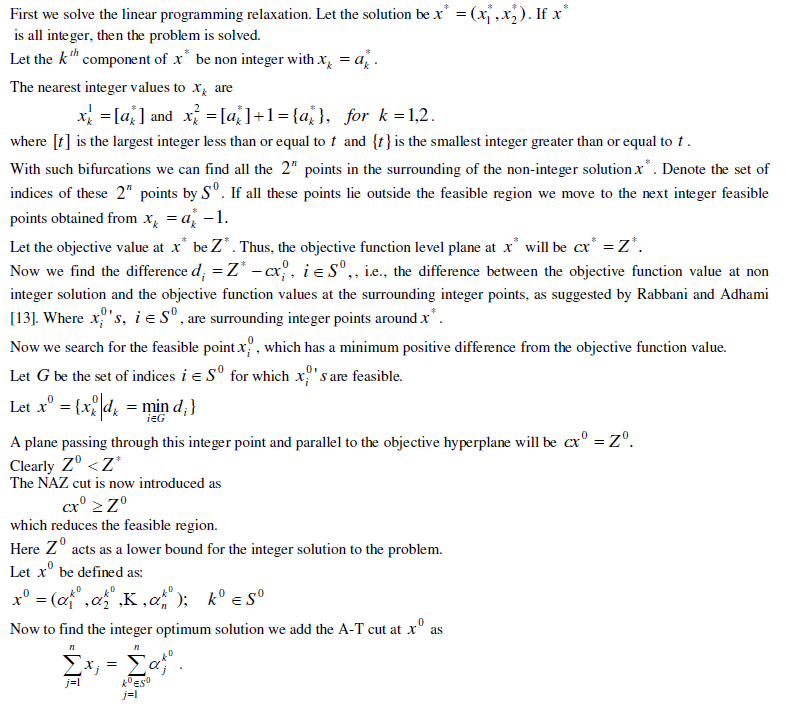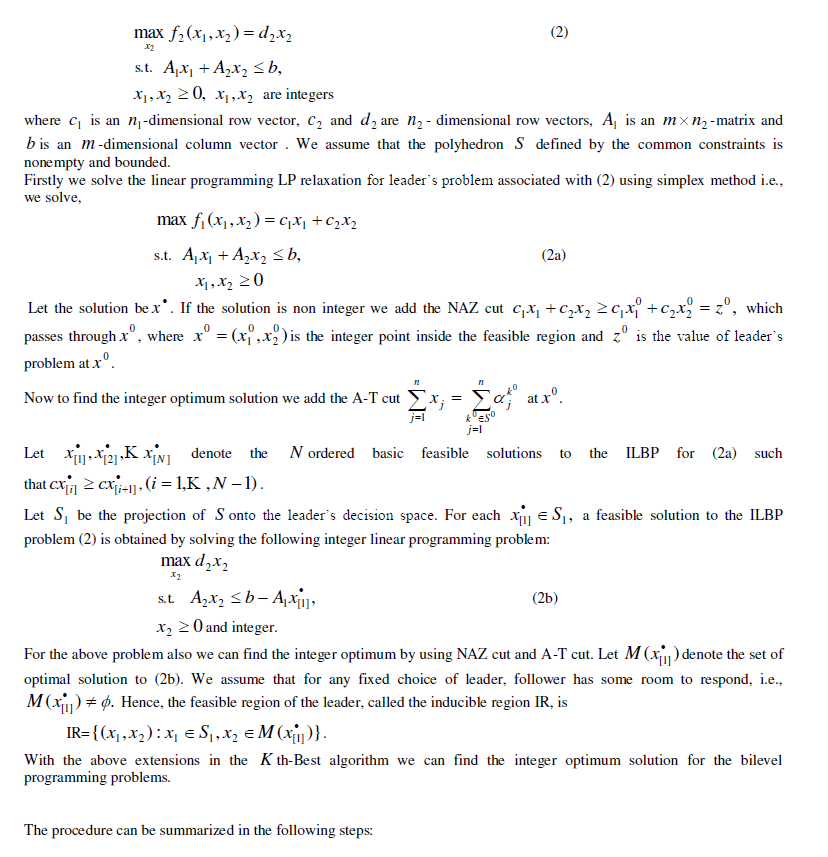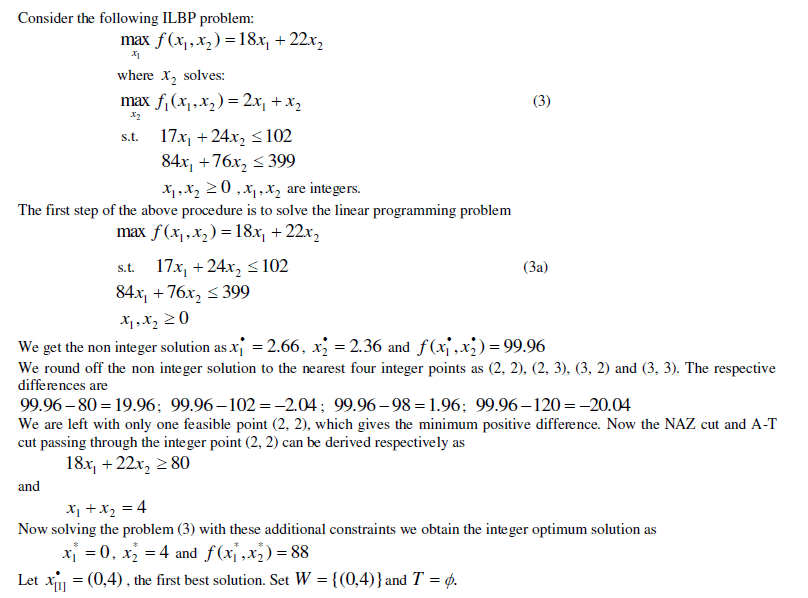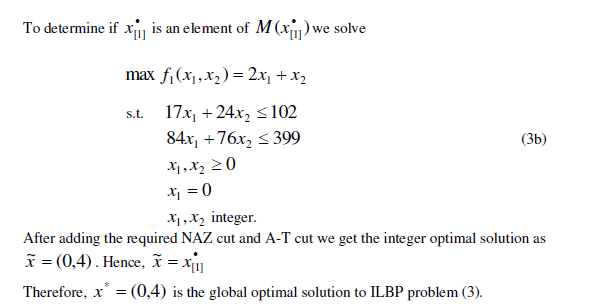ISSN ONLINE(2319-8753)PRINT(2347-6710)
ISSN ONLINE(2319-8753)PRINT(2347-6710)
| A.Y. Adhami1, and Quazzafi Rabbani2 Assistant Professor, Department of Mathematics, Integral University, Lucknow, India1,2 |
| Related article at Pubmed, Scholar Google |
Visit for more related articles at International Journal of Innovative Research in Science, Engineering and Technology
This paper is an extension of the K th-best approach [4] for solving bilevel linear programming problems with integer variables. NAZ cut [2] and A-T cut [3] are added to reach the integer optimum. An example is given to show the efficiency of the proposed algorithm.
Keywords |
| A-T cut, bilevel linear integer programming, K th-best approach, NAZ cut. |
INTRODUCTION |
| Bilevel programming has been proposed for dealing with decision processes involving two decision makers with a hierarchical structure. A bilevel programming problem (BLPP) consists of two levels, namely, the first level and the second level. The first level decision maker is called the leader and the second is called the follower. The follower executes its policies after and in view of, the decisions of higher level decision maker i.e. leader. In terms of applications, bilevel programming has been used in many domains, e.g. to design optimization problems in process system engineering [6], design of transportation network [11], agricultural planning [9], management of multi-divisional firms [14]. Many researchers have designed algorithms for the solution of the BLPP [1, 4, 5, 8, 10]. However, there has been very little attention in the literature on both the solution and the application of bilevel problems involving discrete decisions. This is mainly because these problems pose major algorithmic challenges in the development of effective solution strategies. For the solution of the purely integer linear BLPP, a branch and bound type of enumerative solution algorithm has been developed by Moore and Bard [12]. Cutting plane and parametric solution approaches have been developed by Dempe [7]. Saharidis and Ierapetritou [15] gave an algorithm for the resolution of mixed integer BLPP based on Benders decomposition method. In this paper we focus on the integer linear bilevel programming problem, in which all involved functions are linear. The aim of this paper is to present an extended K th-best approach for finding the integer solution to a bilevel programming problem by introducing A-T cut to the reduced feasible region obtained after using NAZ cut. |
II. DESCRIPTION OF NAZ CUT AND A-T CUT FOR INTEGER LINEAR PROGRAMMING PROBLEMS |
 |
 |
III. THE PROCEDURE |
| Using the common notation in bilevel programming, the integer linear bilevel programming ILBP problem can be written as follows: |
 |
 |
 |
IV. NUMERICAL EXAMPLE |
 |
 |
V CONCLUSION |
| We have extended the Kth-best algorithm for solving linear bilevel programming problems with the help of NAZ cut for integer programming along with the A-T cut. This algorithm gives us the integer solution for bilevel programming problems with much computational ease. |
References |
|